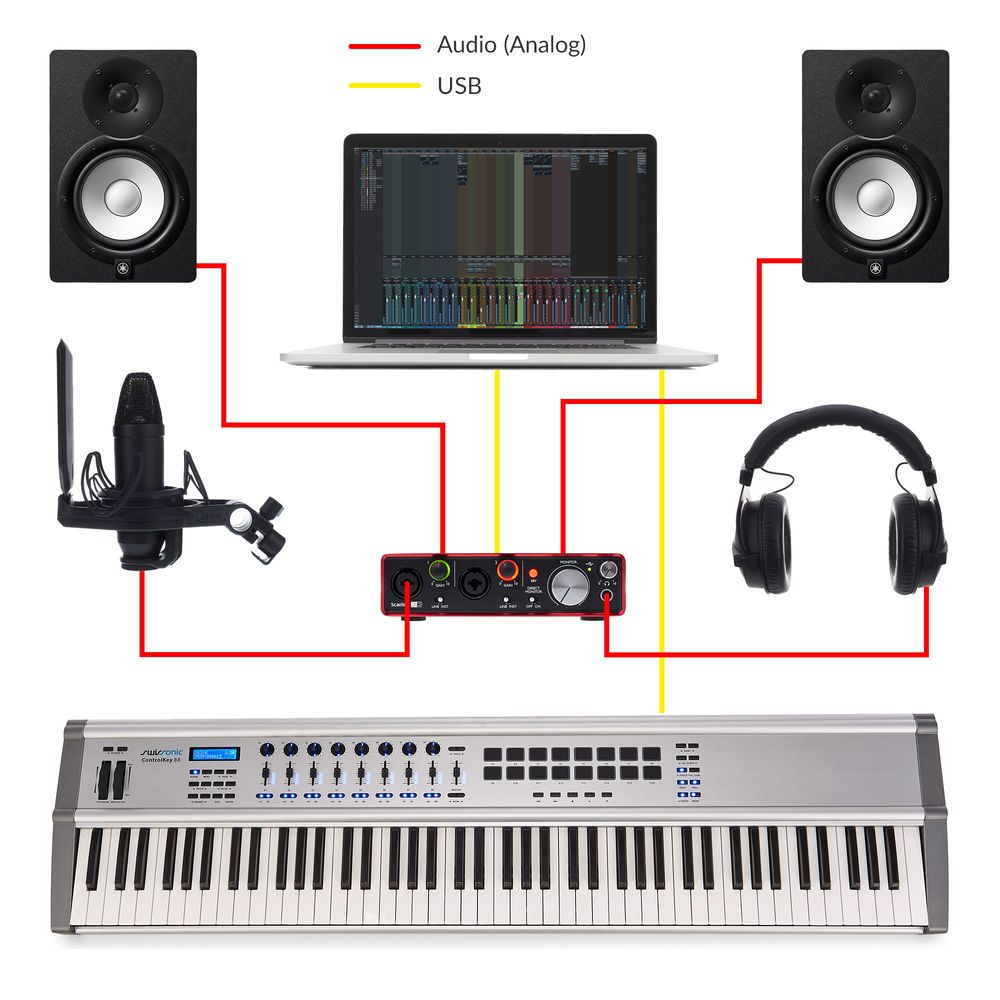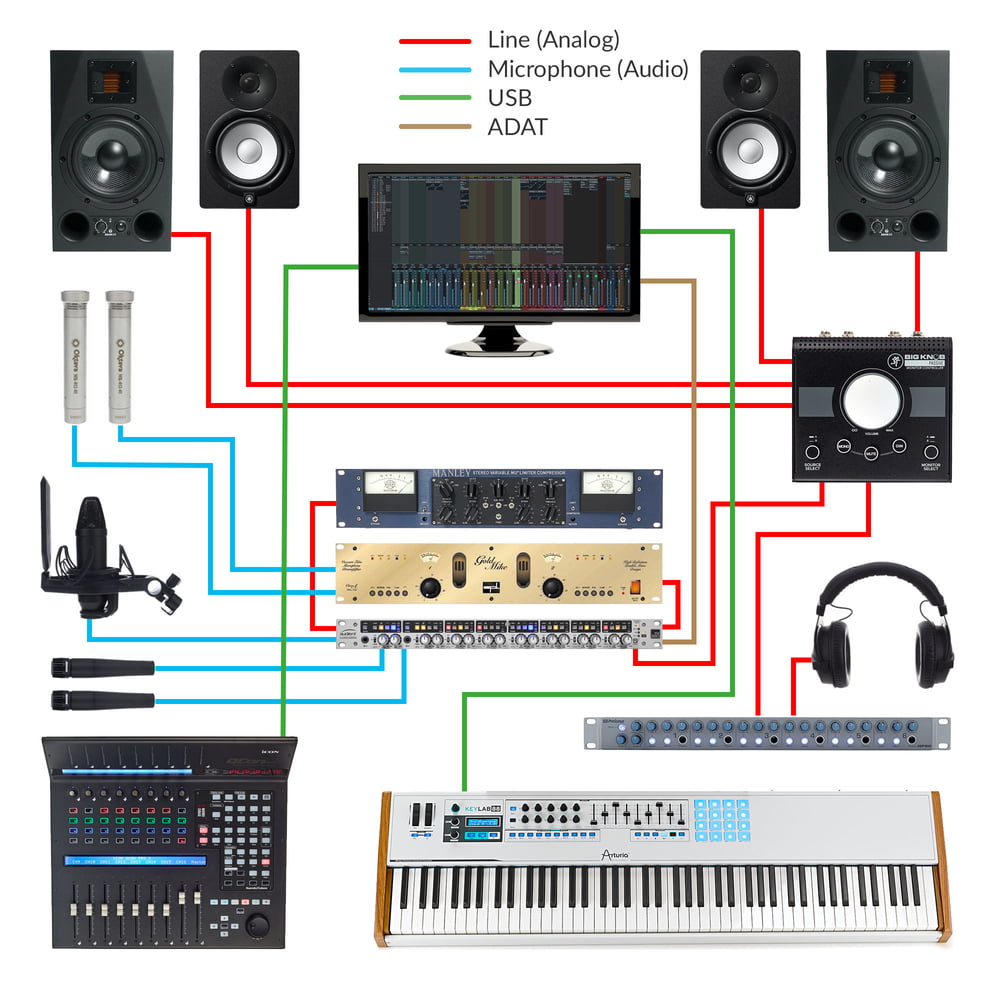11. Sample configurations
Basic gear

Basic configuration
Your basic gear consists of a large-diaphragm mic with shock mount, stand, pop filter and XLR mic cable, a two-channel USB audio interface with integrated mic pre-amps and 48V phantom power, a pair of small monitoring speakers, some headphones and a simple master keyboard with 49 keys. Computing power is provided by a 15" laptop with DAW software.
This configuration is typical for singer/songwriters, but also HipHop artists who arrange their beats on their computer and only record the vocals through the mic. You can find such a setup (not including the laptop) for as little as €1,000.00, or even less.
The expanded home recording studio
At the heart of this configuration, you'll find a powerful desktop PC with high-performance DAW software and additional plug-ins (for mixing and mastering) as well as virtual instruments (for composing and arranging). The two-channel interface has been replaced here with a large USB interface with eight mic pre-amps and an additional ADAT port. For band recordings, the interface now features eight mic pre-amps with integrated AD conversion. Interface connection runs through an ADAT port. For drums and instrumental recording, a pair of small-diaphragm condenser mics and some dynamic mics have been added to the large-diaphragm mic. Since this setup is configured for a musician or musicians to be working alongside the sound technician, it also features a multi-channel headphone amp and some headsets. An additional channel strip is provided for vocals or special solo instruments. Apart from the more elaborate master keyboard with 88 hammer-action keys, this configuration also boasts a DAW controller for fader-based mixing. The user will find another treat in the monitoring controller and larger number of monitors- This - admittedly already quite elaborate set - will set you back about €3,000.00 - €4,000.00 if you invest in high-quality components (again, this is without the desktop PC).

Expanded configuration
Of course, there are almost unlimited variations on this theme, and any setup can still be expanded by mixing desks, hardware processors (equalizers, compressors, reverb, etc.) and other gadgets which can be useful in everyday studio situations. But the size of your investment should reflect your needs. A mixing desk may make no sense in your particular work flow, for example if you end up (or are already) mixing almost everything in your DAW software. In this situation, you may find your mixing desk relegated to a luxurious (if needlessly expensive) multi-channel pre-amp.




